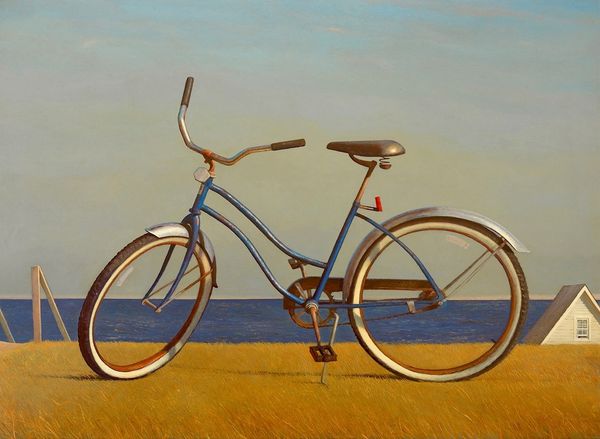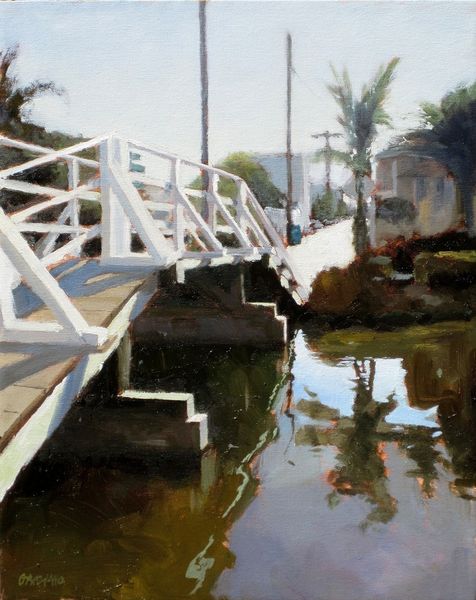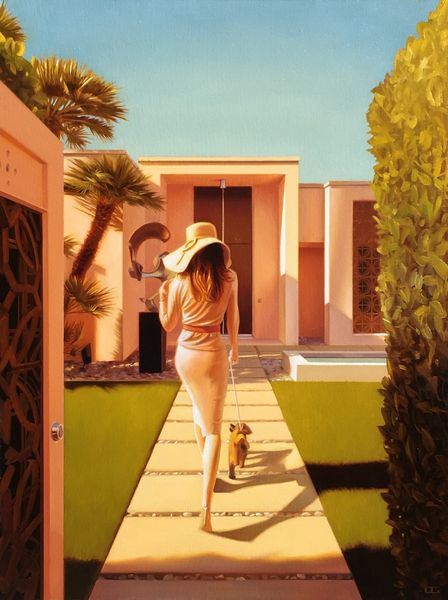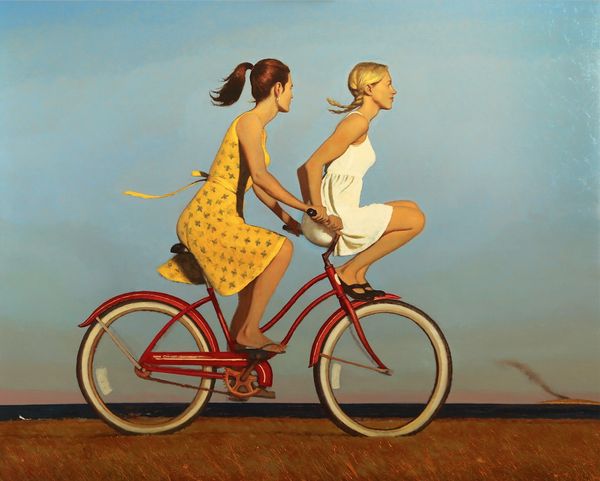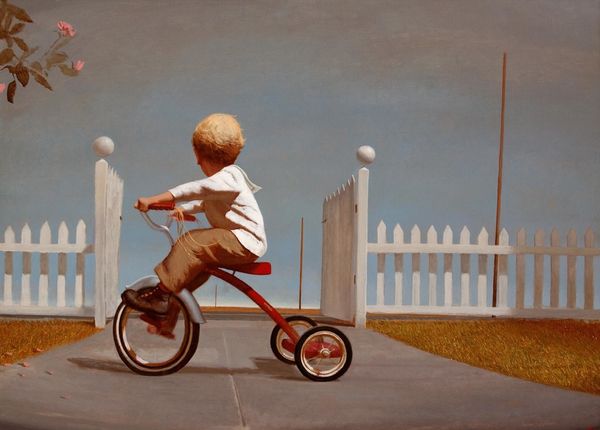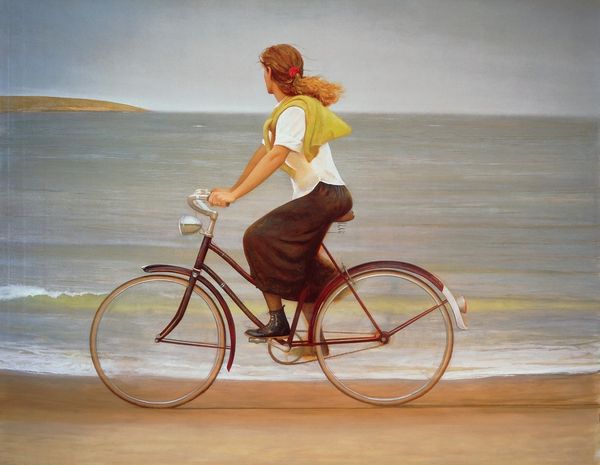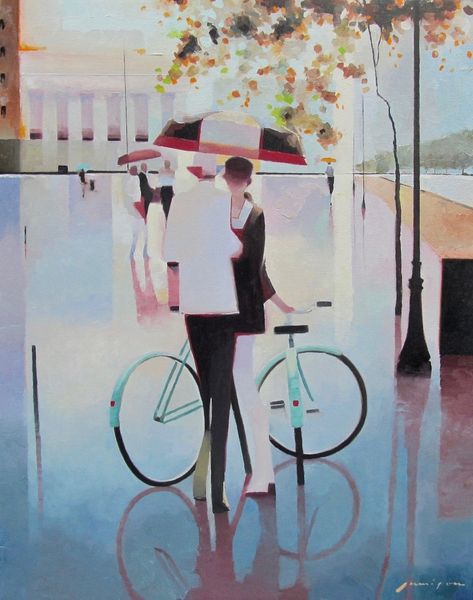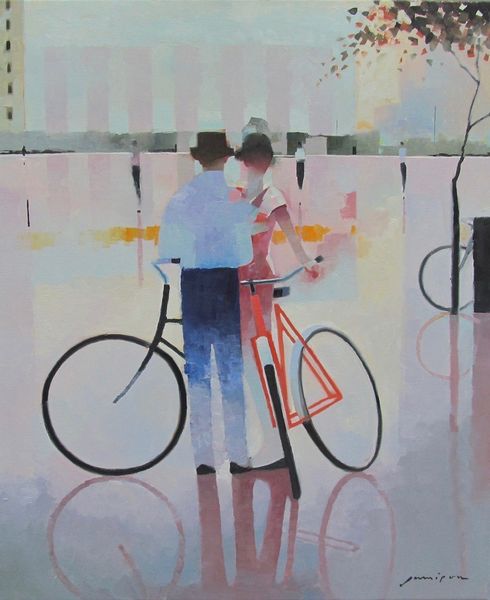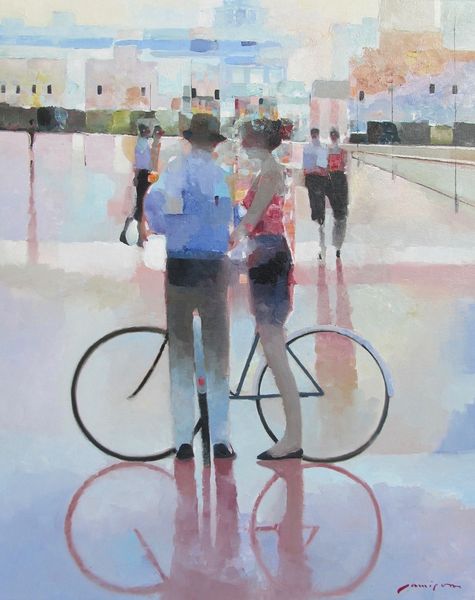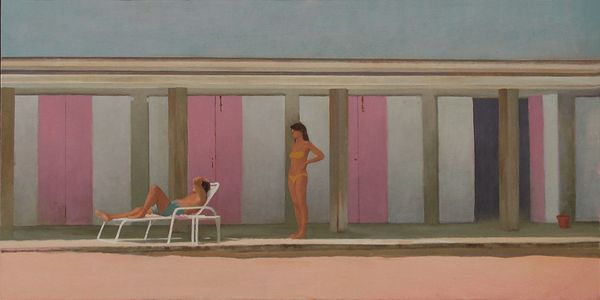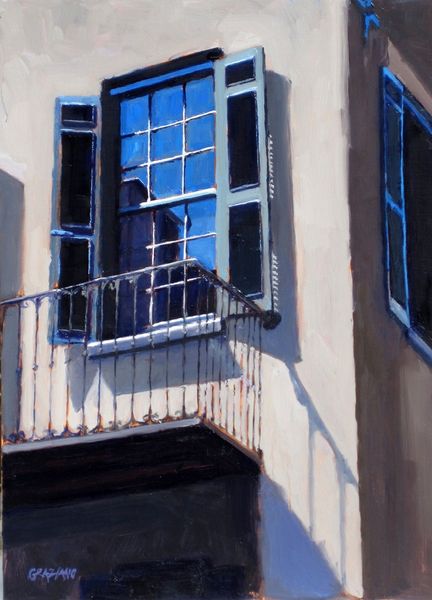
painting, plein-air, pastel
#
figurative
#
painting
#
impressionism
#
graffiti art
#
plein-air
#
street art
#
street-art
#
landscape
#
figuration
#
oil painting
#
pastel
Copyright: Modern Artists: Artvee
Editor: This piece is called "Home" by Nigel Van Wieck. It seems to be a pastel painting depicting a woman on a bicycle riding past what looks like a building in a tropical location. The overall feeling is very serene and quiet. What do you see in this piece from a historical perspective? Curator: What strikes me immediately is how the artist chooses to depict the scene. It's a contemporary moment, certainly, but the style – with its visible pastel strokes and focus on light – itarkens back to Impressionism. Why do you think Van Wieck utilizes a style associated with leisure and affluence of the late 19th century to depict this scene? Editor: Perhaps to romanticize or elevate an everyday scene? To suggest a timeless quality, even amidst the backdrop of modern life? Curator: Precisely. And consider the title: "Home". Who gets to define "home", and what imagery typically gets associated with that concept? Is it a universally accessible idea? Does the choice of representing it through a woman biking past a generically "tropical" building hint at larger issues of tourism and development that often impact such regions, particularly concerning who can truly *belong* there? Editor: So, it's not just a pretty picture; it subtly raises questions about privilege and access. I hadn’t thought of it that way, focusing more on the aesthetic appeal. Curator: The appeal *is* intentional, I suspect. It draws us in, but then allows us to reflect on what visual languages and symbols are doing to promote ideologies, conscious or not. What’s home, and who is welcome there, is at the crux. Editor: I'm beginning to appreciate how much historical context and critical questioning can deepen an understanding of even seemingly simple artwork like this. Curator: Exactly. Art often speaks to the dominant values of its time, either to uphold or question them, or simply reveal them. Analyzing from a historical perspective gives us valuable insight into those underlying dialogues.
Comments
No comments
Be the first to comment and join the conversation on the ultimate creative platform.
